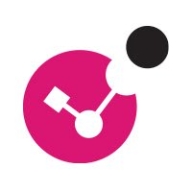

Check Point Security Management and Varonis Platform are both leaders in the cybersecurity market, each excelling in different areas. Check Point’s strength lies in comprehensive security policy management, while Varonis stands out in data security and compliance, making it particularly effective for organizations focused on data governance.
Features: Check Point offers centralized management with a unified console, detailed logging capabilities, and various security features including web filtering and VPNs. It also includes identity awareness which streamlines policy creation. Varonis Platform is known for its robust data security capabilities, providing insights into data access and potential threats. It efficiently manages unstructured data and offers detailed compliance features, helping businesses monitor and secure sensitive data effectively.
Room for Improvement: Check Point users desire better system performance, improved integration and stability, and more responsive support. On the Varonis side, enhancements are sought in data processing speeds and interface usability, with additional cloud offerings and stronger DLP integration also being desired by users.
Ease of Deployment and Customer Service: Check Point is mainly deployed on-premises with some hybrid options and gets mixed reviews regarding customer support. Varonis, available both on-premises and on the cloud, generally receives positive feedback for knowledgeable customer service, though some users experience challenges with support responsiveness.
Pricing and ROI: Check Point is seen as a high-end investment with licensing that requires careful planning but justifies its cost through comprehensive capabilities and improved security posture. Varonis is considered expensive, especially for small businesses, due to its modular licensing structure, but provides value with its data governance and compliance features, often resulting in notable ROI.
I have seen a strong ROI from using Check Point Security Management through unified policy management, reduced misconfigurations, and faster incident response.
The time to resolve issues is very much better now with Check Point Security Management.
I have seen a hundred percent return on investment with Check Point Security Management.
I definitely say that we have had time savings by using the DataVantage module and also time savings using the AD module when we are dealing with different incidents.
When we face technical issues, they are ready to help us.
We have partner support that helps us mitigate vulnerabilities reported by our infrastructure team.
The challenge was with drivers due to the size, and we had not provisioned the partition to the right size.
The customer support is above par; it is what I think other organizations should look at to be comparable to.
They respond quickly to anything we need, which is not common among platforms.
It can be a multi-domain Security Management server and can manage large or segmented environments with multiple domains or customers.
When you upgrade multiple times, you leave many files that are useless. They are dated, so it's always better to create a new machine every few versions, for example, three or four major versions.
The scalability of Check Point Security Management is excellent.
Varonis's scalability as eight to eight point five out of ten.
Check Point Security Management is really stable, and I have not experienced any downtime or issues with reliability except for when we do upgrades.
The SmartConsole used to administrate the security management is somewhat unstable.
Check Point Security Management is stable and I have not experienced any downtime or reliability issues.
When the logs are too heavy for the security management server, the CPU spike will be high, causing our management day-to-day activity to lag or become difficult.
I believe they can improve the management by allowing better API functionality because the API now is a little complicated, making it difficult to do automation.
Additionally, it crashes pretty regularly, so they could resolve the stability issues as well.
Varonis requires more access permissions for its core functions compared to competitors, which can be a concern for companies about data safety.
A phishing email module would be great; I look forward to when that comes out.
It would be beneficial if the reporting in Varonis Platform could use PDFs instead of Excel for better graphs.
Since we are using it extensively, we get significant discounts during procurement.
Licensing is quite expensive.
We pay on a three-year base.
Varonis is known for its high licensing cost, which can include the cost of multiple servers required for its operations, called collectors.
Check Point Security Management has positively impacted my organization by providing centralized control, allowing us to manage all security policies and gateways from a single console, reducing complexity and saving time.
After deploying Check Point Security Management, we improved our productivity by integrating all devices into a single console instead of managing separate log-ins for each branch's gateways, making our admin team's tasks easier.
The monitoring is exceptional as it provides consolidated logs, signals, and any alerts that come from the security gateway in real time.
Varonis is excellent for scanning unstructured data sources like file shares, OneDrive, SharePoint, Azure Blob Storage, and S3s.
We have created automatic scripts in case there is a chance that it is a ransomware malicious actor, and it will automatically disable the user, log them out, and disable the actual workstation.
In my experience, the best features that Varonis Platform offers are data labeling, data classification, along with all the integrations and its easy-to-use platform.
| Product | Market Share (%) |
|---|---|
| Check Point Security Management | 0.5% |
| Wazuh | 12.2% |
| Grafana Loki | 7.9% |
| Other | 79.4% |
| Product | Market Share (%) |
|---|---|
| Varonis Platform | 5.9% |
| Microsoft Purview Data Loss Prevention | 12.6% |
| Forcepoint Data Loss Prevention | 8.5% |
| Other | 73.0% |


| Company Size | Count |
|---|---|
| Small Business | 44 |
| Midsize Enterprise | 30 |
| Large Enterprise | 41 |
| Company Size | Count |
|---|---|
| Small Business | 2 |
| Midsize Enterprise | 2 |
| Large Enterprise | 12 |
Check Point Security Management is an advanced security management platform for enterprises. The platform integrates all aspects of security. A single platform manages the entire infrastructure, from data centers to private/public cloud deployments.
Check Point Security Management is a reliable and easy-to-use security platform. It integrates all aspects of your security environment to strengthen the security posture without impairing productivity. The system has a layered policy model. This means the security policy can be separated into layers for network segmentation. Different administrators can manage different policies. The policy layer automates the tasks.
The platform is extensible, scalable, and integrates easily with orchestration systems and change management.
Basic Components of the Infrastructure
The smart console offers several advantages. Changes in security policies and logs can be done with a click. You can navigate from an item within a log to the policy. There are also built-in multi-language support and accessibility features.
1. Security Management Server: The server manages security gateways with set security policies and monitors security events on the network.
The automation server is an integrated part of the management server. The API server is active by default on servers with 4 GB of RAM or more and on standalone servers with 8 or more GB of RAM.
The automation server communicates with the management server the same way as the Smart Console. This architecture allows the same validation errors and warnings to be presented when using an automation session.
The same audit logs generated using the Smart Console are also generated using an automation session. If you have a multi-domain environment, there is only one automation server that monitors all the IP addresses of the multi-domain management server.
2. Security Gateway is placed at the edge of the network. It monitors and filters traffic and enforces security policies.
Logging, Event management, and Monitoring
With Check Point Security Management, logging, reporting, event management, and monitoring are integrated. The platform features widgets and chart templates that optimize visibility. One of the best features is the one-click exploration. This simplifies going from a general overview to specific event details.
Benefits of Check Point Security Management
The unified console also means a single policy for users, data, applications, and networks. The granularity control helps accelerate administration processes. This feature, together with automation, is key to achieving reduced operational overhead. Security teams can automate tasks and even create self-service security web portals with the Check Point Security Management platform.
Threat management is fully integrated, with reporting, logging, and monitoring all in one dashboard. This provides full visibility into the security of the network.
Security Management Suite
The Security Management Suite consists of the following modules:
Reviews from Real Users
A Network Security Engineer/Architect at a tech services company says, "The features we like and find the most valuable are the ways we can manage the policy, create objects, and drag and drop objects in our daily operation. It makes our daily operation on the firewall management much easier than going, for example, to one firewall, then going to the other."
"The management API is the best new feature for me. It allows us to further automate our customers' automated server ordering," says a System Engineer Network & Security at OTTO GmbH & Co KG.
A Senior Infrastructure Services Specialist at St.George Bank Limited adds that "The solution is ideal for use and deployment in a large infrastructure environment."
Varonis Platform enhances data security and governance with advanced analytics, identifying unusual access patterns and sensitive areas. Its centralized interface manages permissions across systems, offering essential capabilities for alerting and reporting.
Varonis Platform provides continuous data protection and monitoring by identifying and alerting on unauthorized data access. It offers comprehensive insights into file access and user activities, supporting data classification and simplifying compliance with tracking and monitoring capabilities. Integration with storage systems enables users to manage permissions and access effectively. Room for improvement includes cloud integration and simplifying its interface and calculation engine for ease of use. Challenges include on-premises dependency, licensing costs, and a need for enhanced DLP capabilities.
What are the primary features of Varonis Platform?
What benefits and ROI should users expect?
In finance, Varonis aids in safeguarding sensitive financial data, while in healthcare, it secures patient records. Legal industries utilize it for protecting client information, and retail sectors manage sensitive customer data. These industries benefit from Varonis' ability to prevent unauthorized access and streamline compliance.
We monitor all Log Management reviews to prevent fraudulent reviews and keep review quality high. We do not post reviews by company employees or direct competitors. We validate each review for authenticity via cross-reference with LinkedIn, and personal follow-up with the reviewer when necessary.